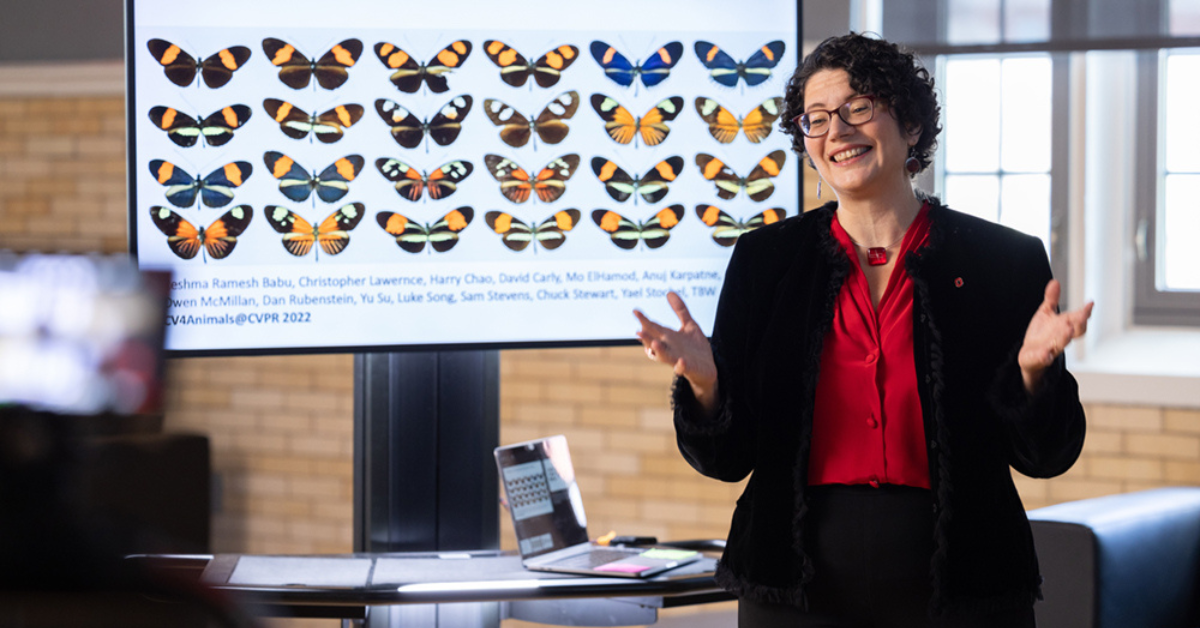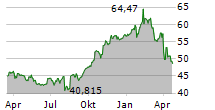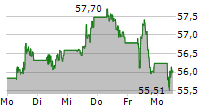
By Emma Reid
NORTHAMPTON, MA / ACCESSWIRE / April 18, 2024 / I'm excited to announce that Dr. Tanya Berger-Wolf will be joining our special Women Rock-IT broadcast to support International Girls in ICT Day, featuring women who have turned their passion for technology into rewarding and successful careers.

Dr. Tanya Berger-Wolf is the Director of the?Translational Data Analytics Institute??and a Professor of Computer Science Engineering, Electrical and Computer Engineering, as well as Evolution, Ecology, and Organismal Biology at the Ohio State University (OSU).
As a computational ecologist, Tanya's research is at the unique intersection of computer science, wildlife biology, and social sciences. She will speak on International Girls in ICT Day, hosted by Cisco Networking Academy's Women Rock-IT Program. The theme for this year's event is Are You AI Ready? And for those who may not be aware, AI stands for Artificial Intelligence, which is what Tanya is going to be sharing more about.
Q: What was your motivation to get into computer science, and what was your path to get there?
A: I always wanted to do math. I even declared that when I was five in front of my whole family. So I went straight for math, eventually realizing that the type of math I like is the math that's the foundation of computer science. I went on to do a theoretical computer science PhD, designing algorithms and doing proofs.
Along the way I met an ecologist who is now my husband and partner. He really charmed me with stories of industrious spiders and shy flowers and took me on nature walks to try to get me over my fear of bugs.
I intentionally switched from a very theoretical computer science PhD to designing computational methods for answering ecological questions.
A zebra's friend
Q: What inspired you to focus on using AI in conservation and what keeps you motivated in the face of the ongoing extinction crisis?
A: There is both the challenge and the inspiration that keeps me going.
The way I got started in conservation was really on a bet. I was working with biologists who study social behavior of animals such as zebras. I got really curious about how they know who a zebra's friend is.
After watching them take 20 minutes just to identify one individual zebra using the available technology at the time, the impatient engineer in me said that there had to be a better way of doing it.
They said, "you think you can do better?" And I said, "yeah, you want to bet?"
I literally bet my reputation on being able to identify an individual zebra from a photograph easily.
AI for conservation
The first algorithm we created was developed into an even better algorithm, which we are still curious about. But it turned out it could be very useful in conservation for things like tracking animals, counting them, and even figuring out who's a zebra or a sperm whale's friend without putting collars or satellite tags on them.
We realized that we needed to build that technology in a way that non-technical people could use, without becoming AI experts in the process.
And that's how Wildbook was born. Having started creating AI technology for conservation, we realized three things:
- just how big the challenges were
- how huge the space was to do something to make a difference
- how urgent all of this is.
The challenge and urgency keep me going. And most importantly, there's something meaningful that we can do with AI.
How important are digital and AI skills?
Q: How important is it for people to include digital skills in their future education and professional development plans? And why is it so important?
A: I think AI is becoming very quickly a part of pretty much everything that we use and touch. So AI literacy is becoming the basic skill that should be taught in school and everybody should have.
It is particularly important in being able to solve complex problems like biodiversity conservation. Because it is not a problem that's going to be solved by AI alone or by humans alone. The answer truly is in partnership: the human-machine partnership.
And to be able to partner well with AI, we need to know what that partner is capable of and what's the best way to have that partnership. And that means having skills that allow us to use AI, to understand AI, and even more importantly, to understand the potential of AI.
Q: What is your advice for any young women starting out in computer science?
A: Not everybody has to do computer science, but anybody who wants to, should have an opportunity to do so. And even more, everybody should have an opportunity to explore it.
Computer science is about getting machines to affect the world. For example, with a few lines of text, we can create a 3D view of the brain with an MRI machine, or understand the past through an ancient genome, or predict the path of a hurricane. This creative process of coding is exciting to me.
Accessible AI and ML learning
Q: AI/Machine learning (ML) has been a subject of academic study for more than half a century. Why was last year such a milestone for this type of technology?
A: Last year it exploded, not because of the algorithm or the math, but it's about how you make that accessible.
Two things happened simultaneously. Firstly, there was a buildup of data available-with many caveats and asterisks that we're now revisiting. And secondly, modern machine learning is data hungry.
When you have the hardware to run these complex models and the data to feed it, you can start capturing the complexity of the world. But it would have been esoteric if not for this brilliant interface that allows everybody to interact with it.
And that's a huge lesson if you want to make any piece of technology useful. It's not about the technology itself, per se, it's about how you make it a partner, how you really make it accessible.
Observe. Experiment.
Q: Conservation of nature often faces complex questions about the natural world. Can AI help?
A: In Henri Poincaré's book Science and Method, he says what we now call the scientific method consists of observation and experiment. And all that a scientist needs to do is look carefully at everything.
AI doesn't fundamentally change the scientific method. It is still observation and experiment. But just like the microscope, the telescope, or genome sequencing, it expands the types of things that scientists can look at.
The fundamental thing that ML and more broadly AI approaches do is extract complex patterns and complex relationships. So, we can not only look at more things, but we can also look carefully at the complexity of the world.
The role of public data
Q: Does publicly available data help in this quest?
A: There is a lot of publicly available data from digitized biological collections, field studies, and citizen scientists. But the most untapped data by far is from social media posts. People love taking pictures of nature, sometimes unintentionally capturing trees and grass, bugs and spiders.
There's a lot of information already there but it is disconnected and disorganized, so we're not taking advantage of it. And we need AI's help to get useful insights from all of it.
Q: Can AI help discover the undiscovered?
A: If we want to discover new things about the world, we need to take a completely different computational philosophical approach and a new design framework of algorithms.
How do we design interpretable, novelty-discovering, computational approaches that produce a testable hypothesis as an outcome?
Maybe you already have your massive species classification from an images model? Well, good for you! But we're interested in using these news tools and frameworks to discover something new. A new species? A new trait? A new relationship?
This is one of my favorite quotes from Ada Lovelace, who invented the notion of programming in the 1830s:
"We talk much of imagination. We talk of the imagination of poets, the imagination of artists etcetera. I am inclined to think that in general we don't know very exactly what we are talking about. It is that which penetrates into the unseen world around us, the world of science. It is that which feels and discovers what is, the real which we see not, which exists not for our senses. Those who have learned to walk on the threshold of the unknown worlds may then with the fair white wings of imagination hope to soar further into the unexplored amidst which we live."
Register now for the Women Rock-IT virtual event on April 25!
Are You AI-Ready? Unlocking nature's secrets: How AI & Data save wildlife and benefit humanity
Check registration page for your local broadcast time.
View original content here.
View additional multimedia and more ESG storytelling from Cisco Systems Inc. on 3blmedia.com.
Contact Info:
Spokesperson: Cisco Systems Inc.
Website: https://www.3blmedia.com/profiles/cisco-systems-inc
Email: info@3blmedia.com
SOURCE: Cisco Systems Inc.
View the original press release on accesswire.com



